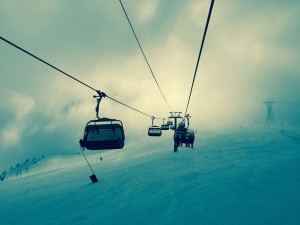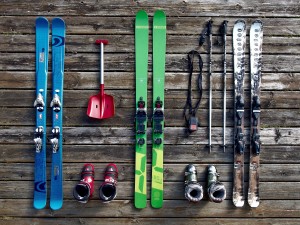How to Decide Between Skiing and Snowboarding
Skiing and snowboarding are the two primary choices for those who want to take up a winter sport, and both activities make the winter season more exciting. Since skiing and snowboarding are both so popular, many are curious as to which one they should learn first. Before choosing, you have several factors to consider.
The Learning Process
The first week or two of learning snowboarding or skiing will vary based on which you choose. Skiing tends to be more gradual in its learning process, with navigation being more comfortable to start. You do have ski poles to help your balance, after all. Since your legs are separated during skiing, you can throw one foot out to help rebalance yourself if needed.
On the other hand, snowboarding will initially involve a lot of falling over. The sport will click for most after a couple of days or weeks, as they get familiar with the balancing and movement, though the first few days can be discouraging. With snowboarding, having both feet attached to the board can feel awkward. You also have less peripheral vision than skiing since you’re standing sideways instead of looking straight ahead.
As a result, skiing may be the more optimal choice if you only have a limited amount of time to learn. After one week, you can be decent enough at skiing to enjoy it as a leisurely activity. Snowboarding requires more patience and time to start. However, since you don’t need poles to snowboard, the amount of overall gear needed can be less.
Mastering the Sport
Although leisurely skiing is easier to learn than leisurely snowboarding, the latter sport becomes easier as you go along. For example, a snowboarder can more easily convert from off-piste to on piste with some minor changes to their technique.
For reference, “on piste” means a path that is flat and firm. “Off-piste” is the equivalent of off-road, untouched snow. Snowboarders tend to get past a hump when they grasp the basics of turning, specifically the movement of shoulders, hips, ankles and feet. Gradually, you can increase speed.
Alternatively, skiing is a very technical sport that lets you expand beyond the casual stages. Navigating off-piste while skiing can be arduous and technically challenging, Plus, snowboarding is generally a comfier experience. Ski boots are notoriously uncomfortable to wear, comparative to snowboard boots, which are more comfortable. Additionally, a single snowboard is easier to carry than everything you need for skiing.
Skiing presents a constant challenge, though. People seeking a continual challenge, where the sky’s the limit, will embrace skiing. Snowboarding is fun, but after a certain point, there is not as much to master — unless you want to start attempting tricks, which is possible in both sports.
Fitness Requirements
Both sports require a similar degree of fitness. However, it’s worth knowing that skiing demands more of the legs and thighs, whereas snowboarding emphasizes core strength. If your strength is primarily in your core, for example, snowboarding may make more sense. It’s prudent to be in good shape for either sport, though.
Snowboarding and skiing both have their learning curves and differences, though they share a likeness in providing an exciting sport to help enjoy the winter months.


I originally commented I clicked the -Notify me when new feedback are added
Domino QQ Online